The Ministry of Defence has announced a new £1.8 Billion, 15 years contract with Thales to improve Royal Navy ship availability and resilience.
The contract, Maritime Sensor Enhancement Team (MSET), will sharpen the focus on equipment availability, predicting problems – through AI innovations and data management – rather than reacting when they emerge.
The contract will support over 450 highly skilled, UK-based, engineering, IT and supports jobs as well as many hundreds of apprenticeship and training opportunities all across the UK.
“During the life of the MSET contract, the Royal Navy will undergo a significant transition including the introduction of the new Type 26, Type 31 and Dreadnought platforms, as well as autonomous systems. MSET, a scalable service model, will provide greater stability and breadth in the level of support delivered to the Royal Navy during this complex transition period. By investing in new dockland facilities, AI, data analysis tools, and skills, this will deliver greater resilience for the RN platforms.
Over the life of the contract, it will deliver an average reduction in Turn Around Times of 100 days per repair, spares lead times will be reduced by an average of 44 days and reliability improved by 10%. Data Driven Decision making will enable MSET to see beyond the current support horizons and with the increased investment in emerging technologies, including AI, virtual reality and Big Data, create a more proactive and predictive maintenance regime. Investments will include improving facilities at HMNB Devonport, Faslane, Portsmouth and Bahrain to deliver an advanced test and repair capability, allowing specialist technical and engineering skills at the waterfront to provide direct support to the RN.”
Thales say that the contract will create 450 high skilled jobs all across the UK and support the training 100s of apprentices in much needed engineering skills in numerous local communities, with a further threefold increase in supply chain spend, supporting approximately 1,200 additional staff.


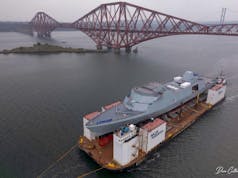


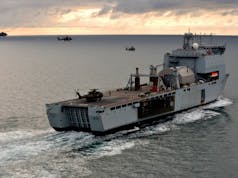
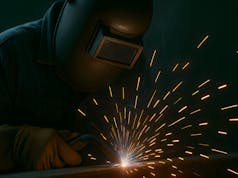

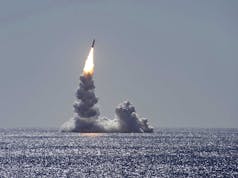

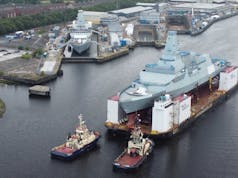


Any ideas how
“ in emerging technologies, including AI, virtual reality and Big Data, create a more proactive and predictive maintenance regime”
makes you a new propellor when it strikes a submerged TUI?
Didn’t think so.
Without proper stockpiles of spares this is window dressing.
The investment in people and facilities is welcome and vital.
I think predictive maintenance is fairy common these days. Feed usage data and environmental conditions into a model, match it with failure and rectification events and the software will find correlations and associations. Modern day equivalent of a stitch in time saves 9.
We had Oil Health Monitoring on the army’s tank fleet over 20 years ago, to detect imminent breaking up of bearings etc.
Mornong Graham. Quite; the principles don’t change. More complex systems and fewer people necessitate more sensors, automatic monitoring and more sophisticated analysis of failure patterns. I think Renault cars can talk to the mother ship, sending data to predict replacement of service items.
Sadly a switch/relay doesn’t meet the HUMS requirements. It’s the same for a lot of solid state sensors. It either works on that day or it doesn’t! You can to a degree base your modelling on the manufacturer’s predicted time between failures. However, these normally don’t take into account environmental factors.
Where you have an object in continuous motion, such as a pump. You can build up a library using pattern of life measuring. Where you get a batch average of the component and base the item’s life around that. Or for more proactive monitoring, you would incorporate an audio or vibration sensor to monitor the wear. Where if the “noise/vibration” reaches a certain threshold, you can either replace it or increase the monitoring periodicity. The increased periodicity does come with a risk, but you can incorporate a further red line threshold. Which when reached must have the component replaced.
Indeed, it’s a (data)science in and of itself I think. I’m no expert. My son works for a company that specialises in data collection from sensors. Good point re the environment. Used to work at a company that processed batches of polyethylene resin which would (apparently) randomly fail to meet QC spec. They eventually sussed the problem with software that spotted a correllation with humidity / rainy weather on the night shift. Saved millions in scrap 🙂
Whilst I completely agree a spares stockpile should be kept and accidents/incidents like that happen, that’s not really what this type of monitoring is designed for though.
I’d assume this is probably more in line with the monitoring they do on production lines in industry, which help highlight components that may need replacing in the next maintenance period, that weren’t scheduled for replacement. The idea is it improves availability as you’re less likely to have unexpected maintenance time because a component failed. Obviously it can’t predict accidental damage like TUI strikes, or, heaven forbid, battle damage, but should help minimise “random” failures.
Then again I could be completely wrong!
The MOD have just put on the market a stores complex in Scotland built in the 1960ts constructed during the Cold war for NATO stores no forward thinking there .Could AI predict a coming threat which may be coming in the not too distant future if so stores will now be placed in a spare bedroom if you have one
Oddly I don’t think you need AI to predict the coming threat…
The issue is more is this complex suitable for moderns stores and munitions?
? Which one mate?
From the Web cam on Warrior it’s hard too see the Recovery pennet Number
But she was South railway Jetty
Sorry wrong pagec
I’ll look it up Daniele, there was a post on my Goole news page last week
Not being sold it’s part of DM Glen Douglas being demolished as no longer required. 16 buildings.
Thanks mate. I suspected Tommo meant GD with his NATO ref.That’s a very big site, and our northern bomb stock. No way is that sold off in its entirety, and to construct another elsewhere in modern times with its underground workings would be astronomical.
Glenn Douglas MOD stores and Armament depot too be Demolished and land up for sale Daniele
Only a small part mate. It’s too big, too vital to be sold of in its entirety. And it’s a NATO site.
650 acres MOD are now just going too demolish around 16 buildings ,
Hi Tommo. Thanks. The bits that matter are the railhead and underground area.
There’s going too be alot of Asbestos dust around the Argyll area mind you it’s always raining up there that’s a plus
😆
This does rather sound like a lot of displacement activity to avoid the fairly basic steps of, you know, maintaining larger stocks of spares. If the spare part is on a shelf in, then its lead time drops to zero days.
Indeed. In stable peacetime you might get away with just in time-ish, but in dangerous times or actual war it’s insanity/treason.
I understand this system is to order proper stock of spares “before” something happens. Fingers crossed. I do not understand why MOD is so reluctant to hold spare parts for these ships, though.
I will cost, but will it cost as much as £1.8Bn in 15 years?
Fingers crossed, heads in the sand-If they uncrossed their fingers they would only stick them in their ears & say, “I’m not listening, I’m not listening!”
This feels like a pretty misleading press release from Thales, seems like this is actually a equipment support contract for combat systems sensors and sonar, not whole ship availability. The Government Press release is clearer:
https://des.mod.uk/smarter-maintenance-for-navy-fleet-under-1-85bn-contract-placed-by-des/
Yay… Bring back Dreadnoughts!!! Lets see how the Russians & Chinese like 12″ shells. Now that’s what I call NGS.
Must go, nurse is coming with my meds.
Is it completely bonkers? If for example Vanguard was kept in service for whatever reason. Its BL 15″ Mk1 45 calibre guns would up to the late 1990s been considered obsolete. However, today perhaps not so much!
The BL15″ Mk1 as fitted to the majority of the Royal Navy’s battleships, could when used by coastal artillery and fired from a 45 degree elevation, reach a range of just over 40km. Which by today’s standards, is similar to a base bleed 155mm shell (40km) fired from a 52 cal 155mm gun of the Pz2000 SPG. So not great.
A 155mm base bleed shell gives about 10km additional range over a non-assisted shell. A rocket assisted shell (RAS) is about 15km on top of the range of a base bleed, so around 25km additional range over a standard shell. In percentage terms the base bleed gives around 25% more range. Whilst the RAS gives around 75% additional range. Though there are some RAS that can give you just over 100% better range over a standard shell.
So if if these percentages were scaled for the BL15. We would have around 50km for a base bleed and around 70km to 80km for RAS. Which in the grand scheme of things is still not great.
However, there is a new 155mm shell that is soon to be on the market. This is Nammo’s guided ramjet powered 155mm shell. Which has a targeted range of 150km, a significant improvement over the standard shell. What if this was developed for the BL15? We could be looking at around 200km for a guided shell. Which is much more respectful.
Also of note is that a non-assisted 155mm shell contains around 6.8kg of explosive. Whilst the later WW2 15″ HE shell contained around 59kg. A rocket assisted shell will contain less explosive than a standard shell, in some cases up to 50% less. The Nammo ramjet will be no different in this regard. Which if the case, a 15″ ramjet shell would still be carrying around 30kg of HE.
Some other considerations, is that the BL15 Mk1 45 calibre gun is a pre-WW1 wire wound gun tube design and the later WW2 shells did not have today’s longer aerodynamic shape. Today, the gun tube would be a solid piece steel alloy, with perhaps a sacrificial liner, but definitely chrome lined. It would likely be around 52 calibres long to increase the muzzle velocity. Similarly the breech chamber volume would be adjusted to take into account the stronger metal used in the tube, which can handle higher pressures. The standard shell would have a better longer aerodynamic shape, that makes use of the increased chamber pressure. So the standard non-assisted shell would range quite a bit further further, probably closer to 50km when fired from 45 degrees. Something else to consider is the turret design. The Vanguard’s turret elevation was restricted to +30 degrees. Could a battleship’s turret be designed to allow for at least +45 degrees or preferably up to +60 degrees and more of elevation? As the +45 degree angle will maximise the attainable range. Whist around +60 degrees allows the shell to dive steeply on to a target aiding penetration.
So is it a crazy idea, for a ship to be able to lob a guided shell over 200km. That contains at least 30kg of HE and can land that shell with near pin point precision on to the target? Especially when 8 of the buggers are landing on top of the target nearly simultaneously! Would definitely be a symbol of deterrence when sailing off somebody’s coast!
To improve availabilty and resilience?…Here’s a thought .how about building more of them in the first place…its a bit left field I know but hey …it could work
I know its not really in the true sense of the article but I couldn’t resist.
Is this increasing privatisation of the armed forces logistics capability? 15 years is a long contract, maybe add stability , but judging by previous contracts like housing and recruitment everyone may have to watch for 15 years a complete fiasco without being able to input anything positive , my maths 120 million a year as a rough guide . Maybe a good thing or bad thing . Will it hinder ship repairs with navy crew not allowed to repair parts of ship ? I dont know
This echoes my thoughts. Why is this being run by Thales? What if they fail to make the savings or increase sea days? Do we get the money back?
I think this is very necessary for QE class shafts…
A whole lot of money for a vague deliverable. Would be good if they explained how it was going to deliver improvements and how it brings value for money.
Or you could just sack people and prosecute suppliers if their machinery breaks. It never used to fall apart and modern ships are no faster than WW2 ships. How is it possible that a WW2 ship with steam turbines was just as fast and far longer lasting. This is rediculous, worse they expect tax payers to foot the bill for failure. Claiming the engines are morel fuel efficient when they cost millions to repair is clearly false economy.
Those rose tinted specs need to come off. Ships from that time had loads of problems. Some which never got fixed.
For examples look at how long WW2 carriers were in maintenance/refits compared with sailing days. Also look into how many times ships went to sail but had an issue delaying departure.
It’s just occurred that there’s another important aspect of the contract that MoD have got wrong in the past. I hope this time they’ve remembered to pay to own the system or at least the data, so in fifteen years time (or before) the work can be brought in-house and we are not locked into Thales.